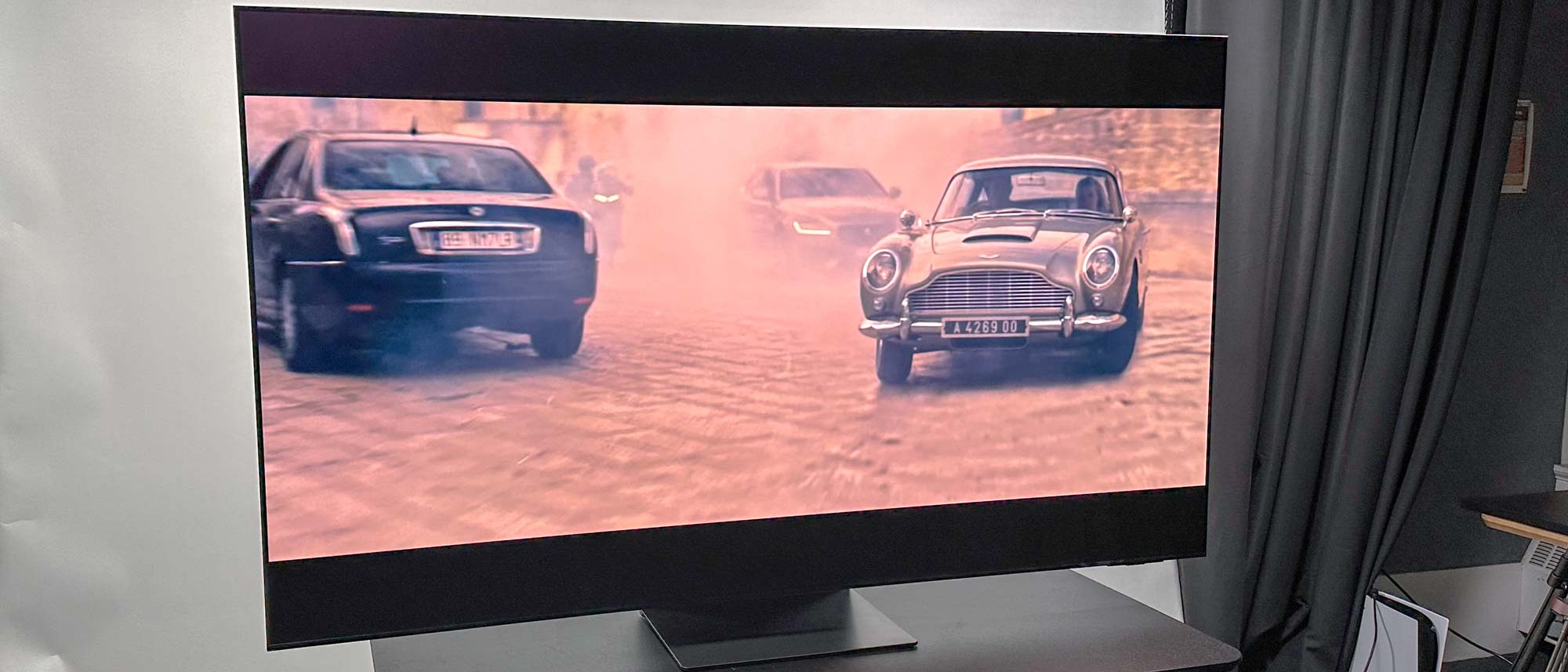Tom's Guide Verdict
The Samsung S95C OLED TV is a premium and well-rounded TV that impressed in our benchmark testing across-the-board. Upgrades compared to the previous-gen model show Samsung is taking OLED seriously, plus the set is great for gamers.
Pros
- +
One Connect box for cable management
- +
Impressive brightness
- +
Works as a SmartThings/Matter controller
Cons
- -
No Dolby Vision
- -
Built-in audio is average
Why you can trust Tom's Guide
Price: $3,299
Screen size: 65-inch
Model: QN65S95CAFXZA
Resolution: 3,840 x 2,160
HDR: HDR10, HDR10+, HLG
Refresh Rate: 144Hz
Ports: 4 HDMI 2.1, 3 USB
Audio: 70W, 4.2.2 channel
Smart TV Software: Tizen
Size (without stand): 56.8 x 32.7 x 0.4 inches
Weight (without stand): 41.7 pounds
The Samsung S95C OLED TV was one of the most anticipated TVs of the year. As a reminder, it’s the company’s second shot at QD-OLED, the panel technology that promises a brighter OLED experience thanks to the addition of quantum dots. And though we had some reservations about Samsung’s new TV category the first time around, the S95C has upgrades that move the needle.
For one, the set’s design is slimmer than the previous-gen Samsung S95B OLED TV and comes in a new 77-inch configuration. It also features the One Connect Box for cable management though, as it turns out, the One Connect Box might be preventing the TV from passing through 4K/144Hz signal.
Despite of that snafu, it’s easy to recommend the S95C as one of the best TVs you can buy right now. Thinking about picking up Samsung's flagship QD-OLED? Take a look at our full Samsung S95C OLED TV review below to see if it’s the right TV for you based on our in-depth testing.
Samsung S95C OLED TV: News and updates
Samsung announced a successor to the S95C at CES 2024. Unsurprisingly, it's called the Samsung S95D OLED and it comes with a new anti-glare filter. It has a lot of similarities to the S95C, however, so you won't need to upgrade if you bought this year's model instead. Want to see what else is coming in 2024? Check out our guide to the Samsung TV lineup 2024.
Samsung S95C OLED TV: Price and configurations
We reviewed the 65-inch model of the Samsung S95C OLED TV, which costs $3,299 / £3,599. The OLED TV is available in a smaller, 55-inch size for $2,499 / £2,399 and a larger 77-inch size for $4,499 / £5,099.
The size options are limited compared to the OLED TVs from LG and Sony, but the addition of the 77-inch model does offer more versatility compared to last year’s version of this TV. All the best 55-inch TVs and best 65-inch TVs remain popular, too.
To help you decide which version makes sense for you, we created a ‘What size TV should you buy?’ guide. No matter which you choose, you should expect to see similar performance to our 65-inch test model. All sizes offer the same collection of ports and Samsung’s Neural Quantum Processor 4K.
Get instant access to breaking news, the hottest reviews, great deals and helpful tips.
Samsung S95C OLED TV review: Design
The Samsung S95C OLED TV has all the visual marks of a premium OLED TV: metal materials, a bezel-less screen and an impressively thin panel. It’s even thinner than the S95B, measuring a mere 10mm thick.
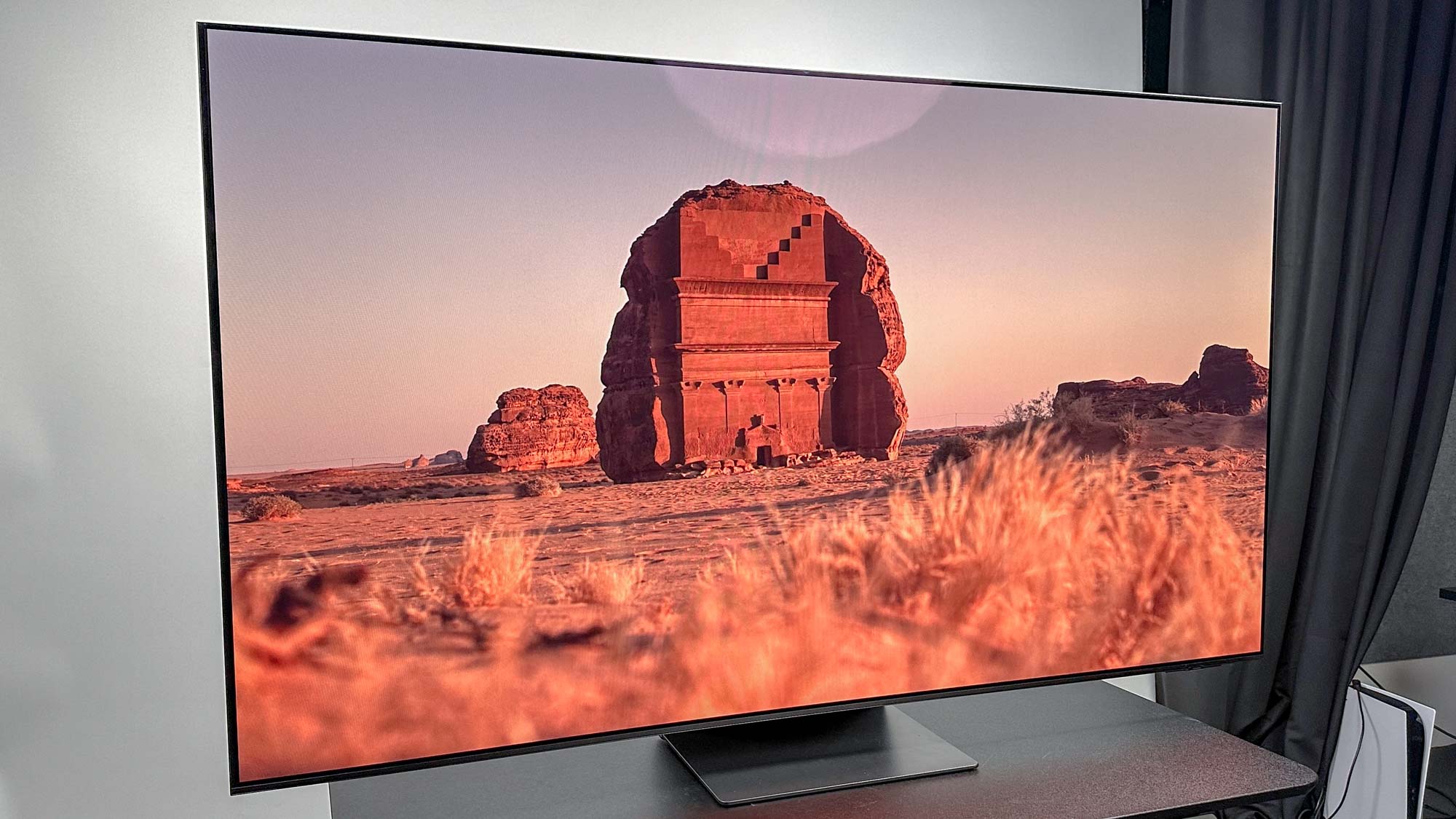
Samsung made the TV slimmer by offloading the components into the company’s proprietary One Connect box, a cable-management solution that makes it easier to switch between inputs. If you were to wall mount this TV with one of the best TV mounts instead of using the included central stand, the One Connect box will let the TV sit flush to the wall while providing a more convenient access point for ports.
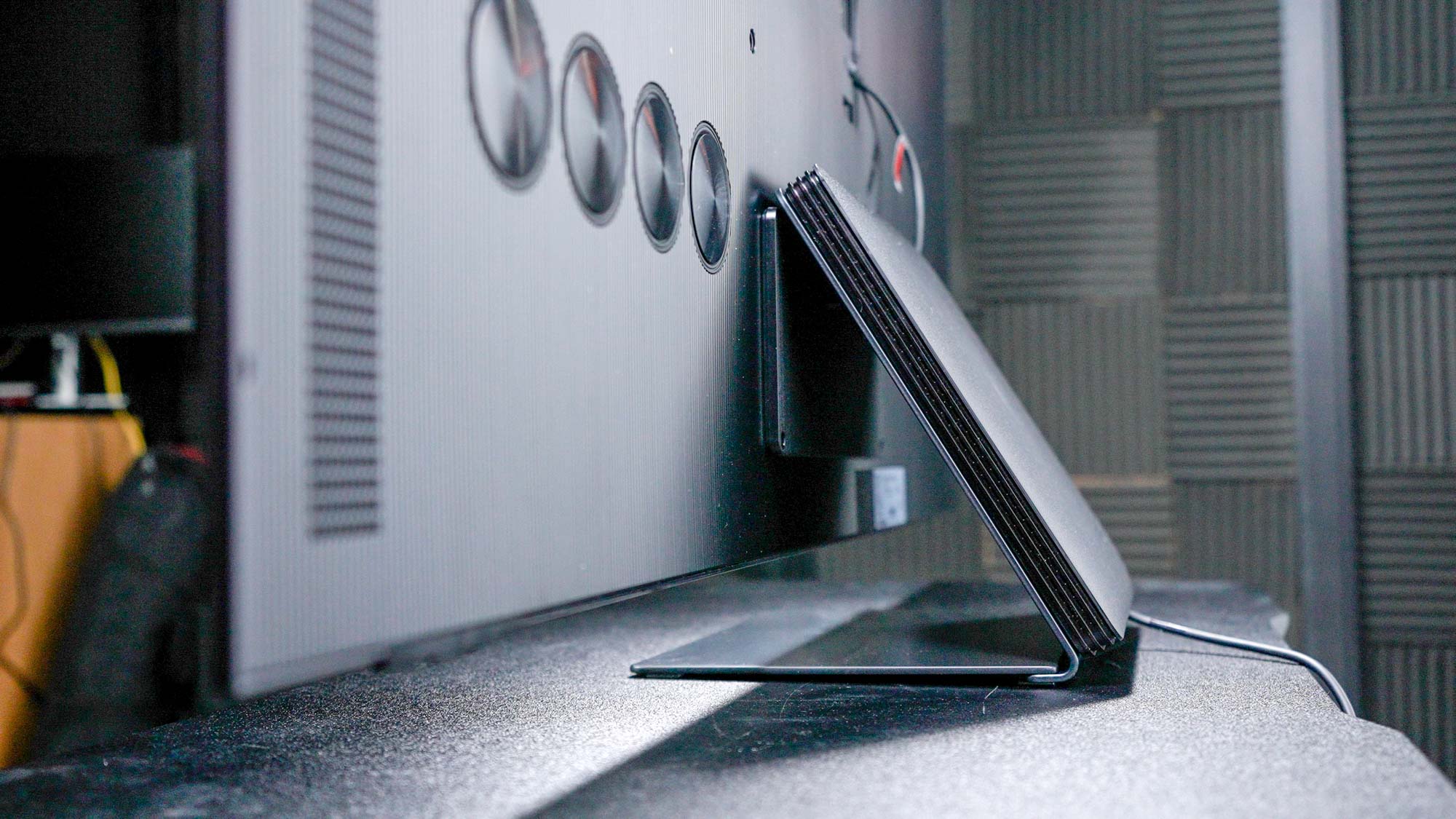
Speaking of ports, the TV has 4 HDMI 2.1, including one with eARC support for soundbar. It also features 3 USB ports, plus a built-in ATSC 3.0 tuner for NextGen TV in the markets where the 4K over-the-air broadcast technology is available.
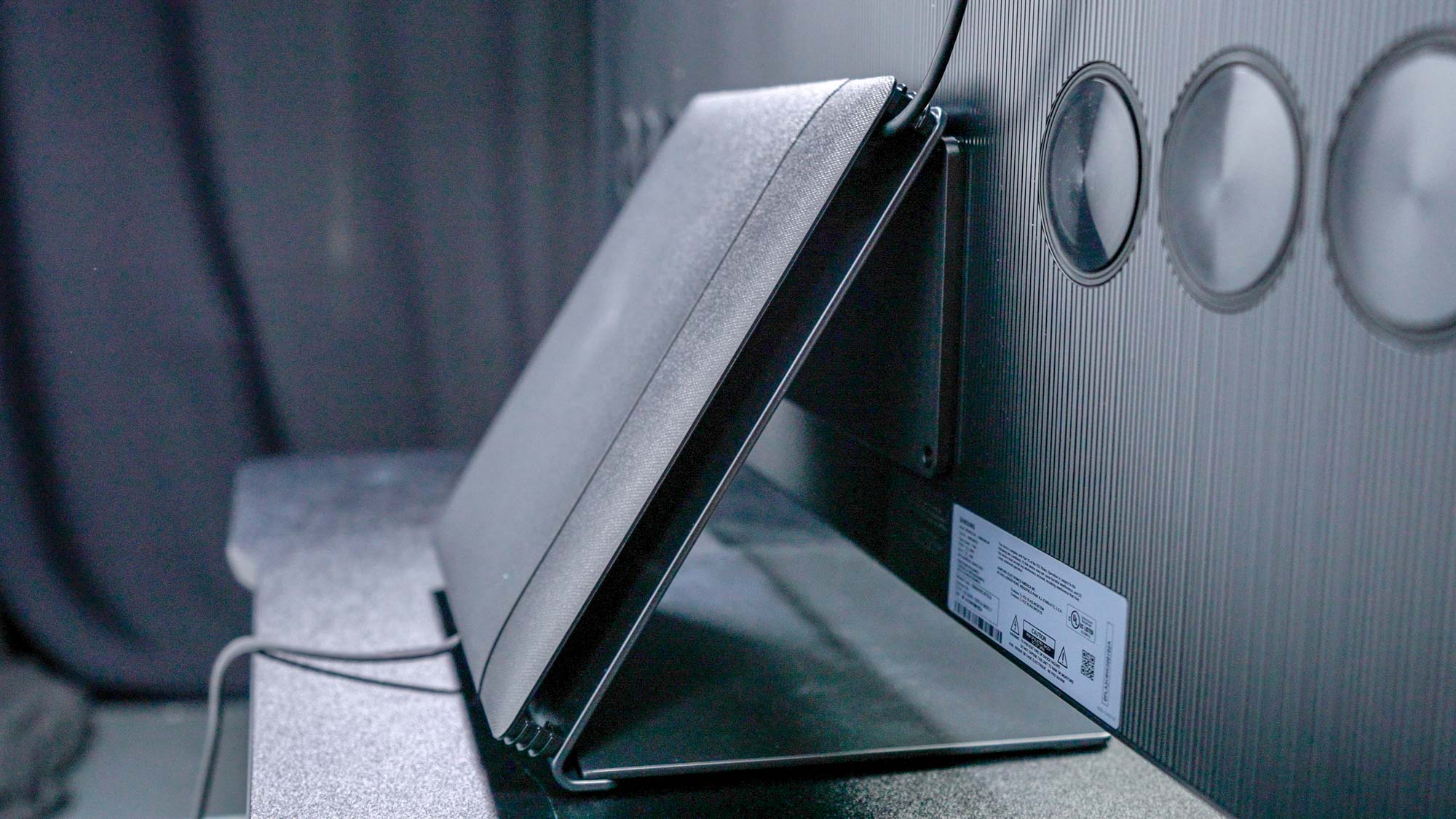
Samsung S95C OLED TV review: Performance
When we tested the Samsung S95C OLED TV with our X-Rite i1 Pro spectrophotometer and SpectraCal CalMAN Ultimate calibration software, the display was able to reproduce about 141.5% of the Rec 709 color space in standard mode, which is in the range of what we want to see from premium OLED TVs. For comparison, the LG C2 OLED TV covered 134.5%.
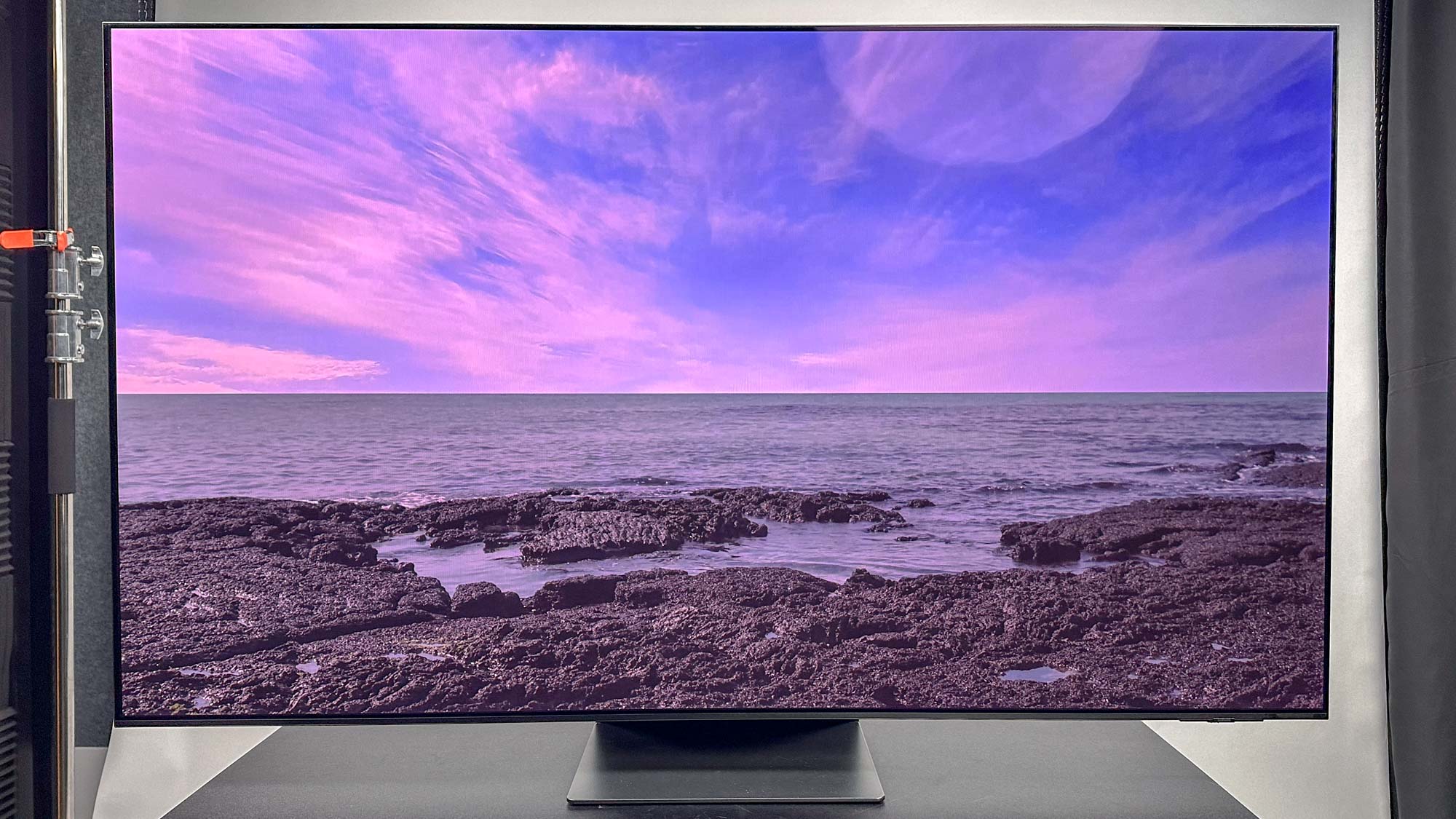
The Samsung S95C OLED TV also tested a Delta-E accuracy score of 1.4 (with closer to 0 being best) in Filmmaker mode, which typically provides the most accurate picture out-of-the-box. That said, the S95C doesn’t have Dolby Vision, so there could be a disconnect between the creator’s intent and the color of the picture that’s ultimately produced. But most viewers will be satisfied with the impressive HDR and HDR10+ performance.
HDR brightness is where we found one of the biggest improvements between the Samsung S95B OLED vs. S95C OLED. Samsung did say the S95C was brighter, but didn’t specify how much. We tested a 30% improvement, from 1010 nits to nearly 1,370 nits in the same 10% in standard mode with HDR content. That’s fantastic for an OLED TV. Of course, you could get a brighter picture from QLED TVs, especially ones like the Samsung QN95C Neo QLED TV that can reach upwards of 2300 nits in its brightest modes.

Upscaling on the S95C is powered by Samsung’s Neural Quantum Processor 4K. I watched the car chase scene at the beginning of James Bond: No Time to Die, and the picture’s balance looked beautiful. The set handled the scene’s complicated contrast and artistic shadows extremely well. Thanks to minimal black crushing, the blacks look perfectly nuanced in HDR, with bright areas that hold integrity without blooming thanks to those self-emissive pixels.
This scene is filled with motion, and none of the action suffered from artifacting or other distractions. All the while, I could watch this in a lit room thanks to the set’s brightness abilities, which is something that hasn’t always been enjoyable with an OLED TV. Similarly, the set’s off-angle viewing is better than most, with the colors holding up well past the ideal 45 degrees.
Our final test applies to the Samsung S95C OLED TV’s gaming experience. It measured an excellent 9.2ms lag time, resulting in responsive gameplay across a variety of genres.
Pair its native 120Hz refresh rate with AMD’s FreeSync Premium Pro, and the S95C makes for one of the best gaming TVs. It automatically switches to game mode when you power up your console, which triggers auto low latency mode (ALLM). Samsung’s Gaming Hub gives gaming a dedicated destination on the TV, complete with a Game Bar that offers quick access to the major gaming settings.
Samsung S95C OLED TV review: Audio
If you’re getting a premium TV like the Samsung S95C OLED TV, we recommend filling out your entertainment setup with one of the best soundbars. This is even more true for Samsung 2023 TVs in particular because of Samsung's Q-Symphony feature. Q-Symphony combines the TV’s native speakers with the soundbar for a fuller soundscape. We’ve found it especially helps raise the height of vocals.
Without a soundbar, the S95C sounds just OK. It lacks sophistication and thumping bass, and doesn’t get all that loud. Again, a soundbar is a straightforward solution. Check out our pick for the best cheap Dolby Atmos soundbar, or all the best Dolby Atmos soundbars, which would pair nicely with the S95C’s thanks to the sets Dolby Atmos support.
Samsung S95C OLED TV review: Smart TV features
The smart TV platform is a major part of using this TV. The Samsung S95C OLED TV has the company’s Tizen platform, with no real changes to note for this year. Samsung told us a while back that’s because they want customers to get used to the big change from a few years ago.

We can’t say it’s our favorite in terms of navigation, but you can still find all the major streaming apps, plus plenty of free content from Samsung TV Plus. What we do like is that the TV can act as a SmartThings hub. If you’re growing your smart home or embracing the Matter smart home protocol, this TV can be the center of control, even if you own smart home devices from all different manufacturers.
When you’re not watching or using the TV, Ambient mode launches a screensaver of sorts. Ambient mode can be customized to play in a carousel of aesthetically-pleasing animations and images. Samsung made Ambient mode mainstream, and though other TV brands have since introduced their own spin on it, we still like Samsung’s version the best.
The Samsung S95C OLED TV remote is thin and minimalistic. Though it’s generally easy to use, the limited buttons means you’ll need to use additional menus to change settings and manage your inputs. Luckily, it has dedicated launchers for Samsung TV Plus, Netflix, Disney Plus and Amazon Prime Video, which is convenient for those who use these services often.

We also like how the remote can be recharged via USB-C or with the solar panel on the back. It’s a pain to change out batteries, especially when you’re settling in for movie night. Not to mention, a remote like this is far more environmentally friendly.
Samsung S95C OLED TV review: Verdict
It’s easy to recommend the Samsung S95C OLED TV. The upgrades to both design and performance leave a strong impression, and it’s exciting to see there’s still room for innovation in the TV space. Plus, it addresses gamers with more determination than any Samsung TV before.

Kate Kozuch is the managing editor of social and video at Tom’s Guide. She writes about smartwatches, TVs, audio devices, and some cooking appliances, too. Kate appears on Fox News to talk tech trends and runs the Tom's Guide TikTok account, which you should be following if you don't already. When she’s not filming tech videos, you can find her taking up a new sport, mastering the NYT Crossword or channeling her inner celebrity chef.
